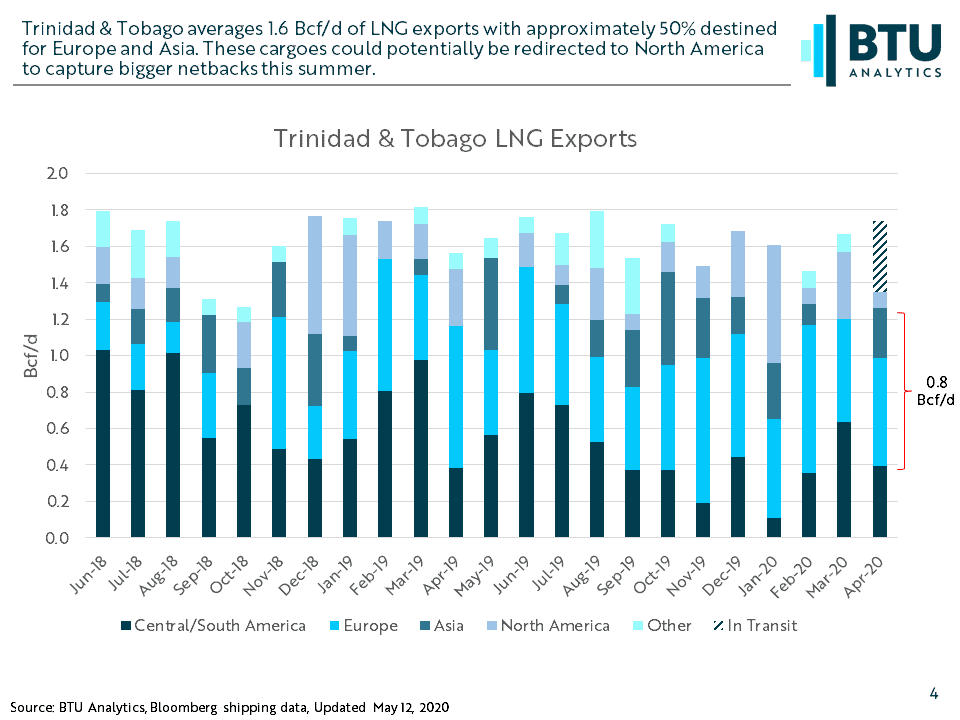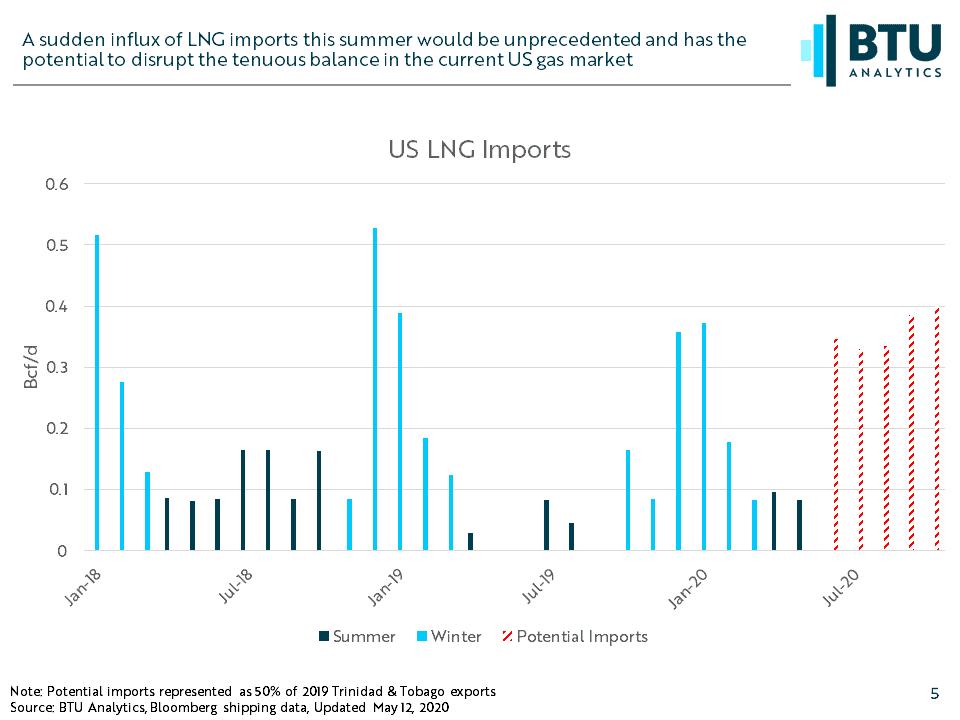Earlier this month, Henry Hub became the most expensive gas in the world as front-month Henry Hub futures settled above European and Asian benchmarks for the first time. The most recent declines in international prices put even more pressure on US LNG exports as international demand falls and buyers look to cancel cargoes. With US gas production set to decline and Henry Hub poised to rise in the back half of the year, could the US see increased LNG imports this summer?
International gas prices have steadily declined since the back half of 2018 as an abundance of LNG, from the US and abroad, flooded the international LNG market. In recent months, the combined impacts of COVID-19, full European storage, and the oversupplied LNG market have pushed European gas prices below $2/MMBtu on par with Henry Hub. At these levels, US LNG becomes uneconomic considering most US LNG contracts are 115% of Henry plus a fixed liquefaction fee before shipping. Even assuming the liquefaction fee is a sunk cost due to the take or pay nature of US LNG contracts leaves international buyers in the red. This has resulted in mass cancellations of US cargoes with over 30 confirmed cancellations for the month of June alone. Based on the current futures strip, this is likely to continue with Henry Hub trading at a premium to TTF in July and August before European prices are expected to strengthen in 3Q20.

While low international prices are likely to decrease US LNG exports, they could also potentially increase LNG imports in the near-term. While spreads between international prices and Henry Hub may not get high enough to incentivize major international shippers such as Australia or Qatar to send cargoes to the US, they could convince shippers that are closer to take advantage of premium US pricing. In particular, the Caribbean nation of Trinidad & Tobago appears well positioned to potentially take advantage of higher US prices. Over the past two years, the island nation has consistently exported approximately 1.6 Bcf/d to countries around the world. The bulk of these exports, about 48% in 2019, go to Europe and Asia, while North America only accounts for about 13% on average. These cargoes that have traditionally gone to Europe and Asia could instead make the shorter journey to the US taking advantage of both higher gas pricing as well as lower shipping costs to increase netbacks. Alternatively, cargoes could also find their way to Mexico, backing out pipeline imports from the US in the process.

LNG imports in the US are not uncommon, however, a sudden surge in the summer months would be unexpected to say the least. The US currently imports an average of 0.2 Bcf/d throughout the year, but it is heavily weighted to the winter months when the Northeast requires LNG imports to meet peak winter heating demand. The summer months are typically much more barren with three months last summer seeing no LNG imports at all. In a potential scenario where only half of the previously identified Caribbean exports make their way to the US, LNG imports would see levels generally seen during the peaks of winter.

Declines in associated gas production and COVID-19 impacts on US demand have left the US gas market in a precarious balance this summer. An unexpected shift in supply and demand fundamentals, such as an unprecedented influx of LNG imports, could lead to significantly higher storage and weaker pricing in the US not unlike the current situation in Europe. BTU Analytics tracks all these changes in supply and demand fundamentals and their impacts on the US gas market in our Henry Hub Outlook.









